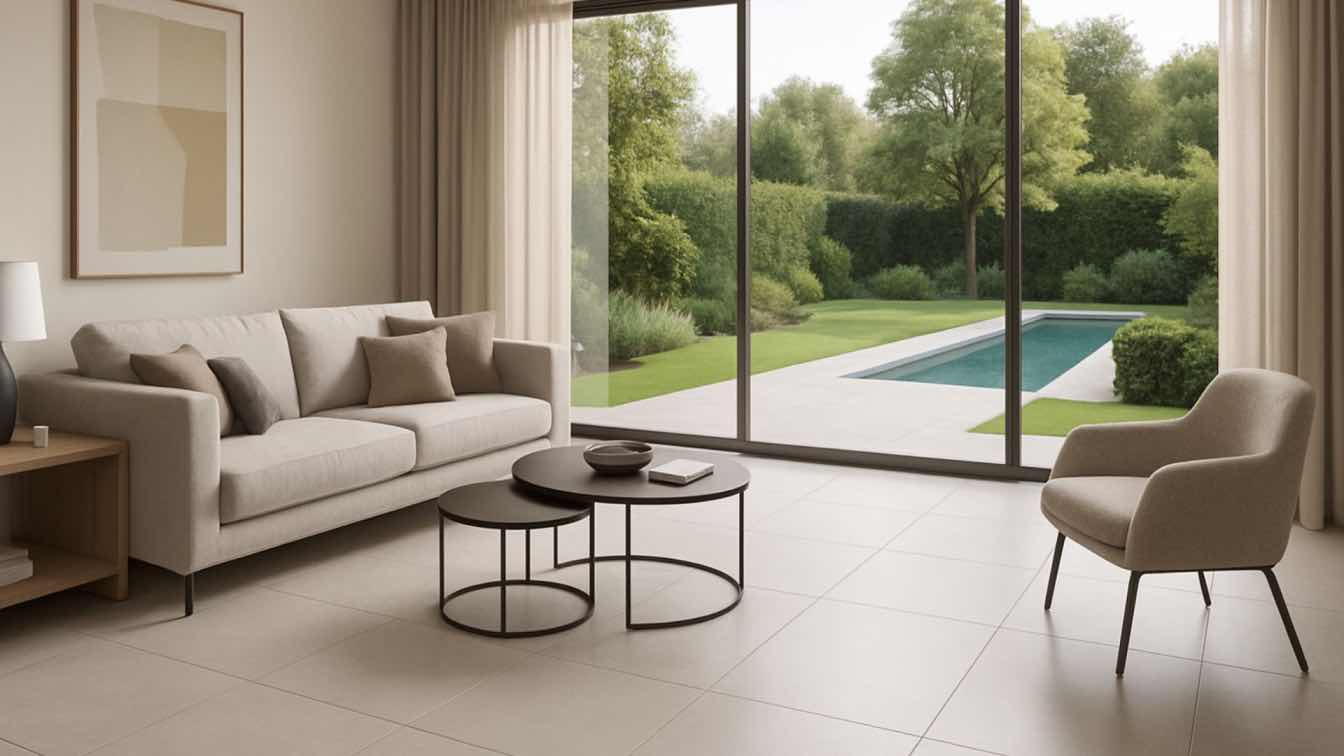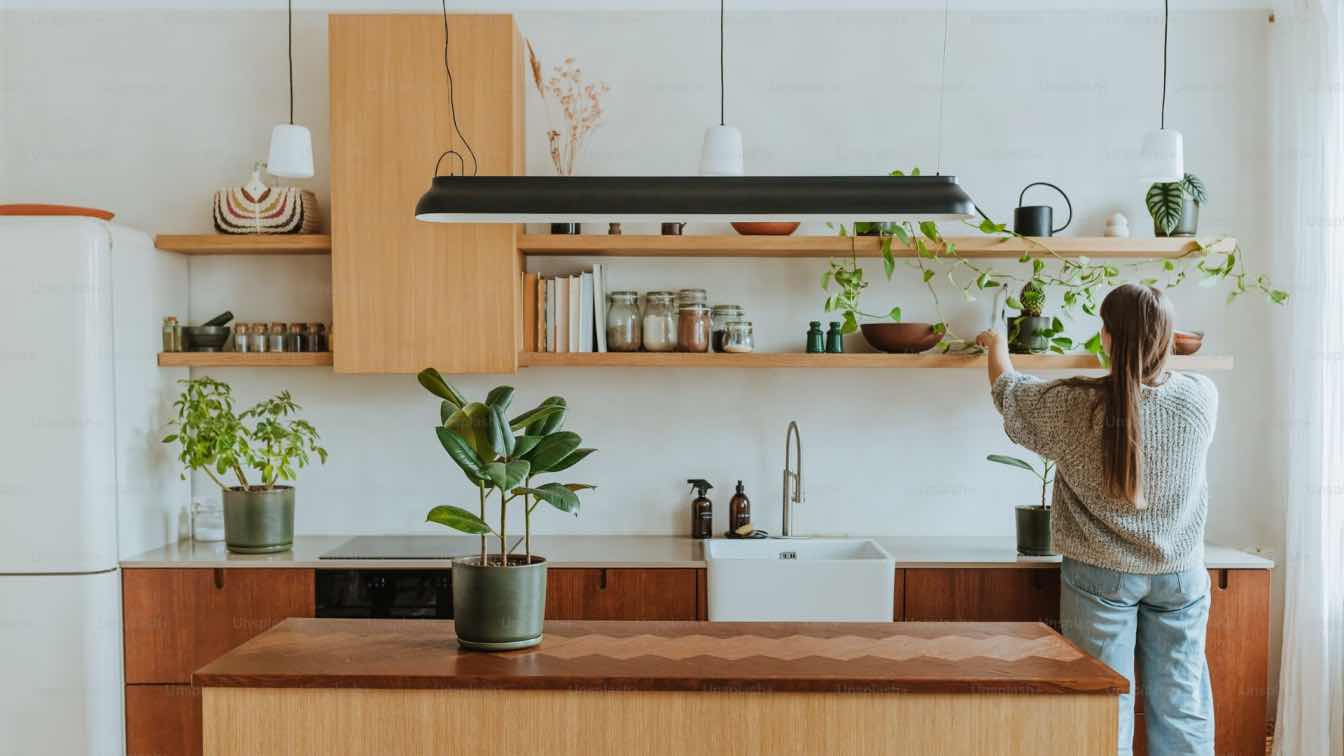Any room of a house can use porcelain floor tiles, and some types are even designed to withstand outdoor use. They are ideal for high-traffic areas like hallways, bathrooms, and kitchens because they are non-porous, meaning that liquids stay on the surface and are easily removed. When choosing the perfect size and shape for your space, you should take layout and budget into account. By minimizing grout lines, larger format tiles can give the appearance of more open space, even though they may be more expensive than smaller alternatives.
With this guide, you can choose porcelain flooring for every room of your home while balancing long-term resilience, design, and functionality.
Why Porcelain? Understanding Its Key Advantages for Flooring
Porcelain floor tiles' reputation for durability is one of the primary reasons for their widespread appeal. Unlike wood, they won't get dented when walked on with high heels, and they are more scratch-resistant than natural stone. It's important to remember, though, that porcelain tile toughness varies. As a result, some are ideal for demanding, high-traffic areas, while others are better suited for places with less traffic, such as bathrooms or shower areas. Always consult the PEI rating to determine whether the hardwearing of a tile satisfies the needs of your specific project.
Here are some reasons why porcelain floor tile is a popular choice for many homeowners before delving into room-by-room suggestions:
Outstanding Sturdiness and Longevity:
Because porcelain tiles are fired at extremely high temperatures, they are denser and harder than many other flooring materials. Because they are resistant to chips, scratches, cracks, and high foot traffic, they are a dependable, long-lasting choice.
Superior Water Resistance:
With a water absorption rate of less than 0.5 percent, porcelain tiles are perfect for moist areas like bathrooms and kitchens where moisture protection is crucial.
Minimal Maintenance:
Porcelain's thick surface keeps stains and dirt buildup at bay. No special products are required; all that is required to keep it clean is a routine sweep and mop.
Wide Range of Designs:
Whether you want to replicate the look of actual stone, wood, concrete, or textiles, porcelain can mimic nearly any surface. There are many different styles to match traditional, rustic, or ultra-modern interiors.
Hypoallergenic and hygienic:
By preventing the growth of mold, bacteria, and allergens, porcelain's non-porous nature helps to create a cleaner indoor environment.
Where to Use Porcelain Floor Tiles
Bathrooms
Porcelain's ability to withstand water is a huge plus in areas like bathrooms that are prone to moisture. Consider using large-format tiles on the floors for a seamless, smooth look. Marble-effect porcelain offers timeless design without the cost or upkeep of real stone. Choosing tiles with a matte or textured finish is essential to reducing the likelihood of slipping.
Kitchens
Porcelain is resistant to spills, stains, and dropped utensils—all of which are frequent in a busy kitchen. Whether you're cooking for a single person or entertaining a large group of people, the surface is easy to clean and keeps your space looking spotless. Matte or textured finishes resist scuffs and oil while offering traction.
Outdoor Spaces
From patios to balconies, porcelain floor tiles rated for exterior use can withstand weather changes, UV rays, and foot traffic. Make sure your selection is frost-resistant and slip-rated for safety, especially if the surface will get wet.
Living Rooms
Wood-look porcelain floor tiles combine the low maintenance of tile with the coziness of wood. Large tiles or continuous patterns can improve flow and give the impression of more space in open-plan homes. Try muted-toned natural stone or soft-textured finishes for a homey vibe.
Hallways and Entryways
Porcelain floor tile that is both durable and fashionable is required in these high-traffic areas. For more traction, go for matte or textured finishes; for visual interest, think about checkerboard or herringbone patterns. In between cleanings, mid-tone or patterned tiles can also help hide dirt.
Bedrooms
Porcelain floor tile is becoming more and more popular in bedrooms, particularly among homeowners who are allergic or live in warm climates. A serene and welcoming ambiance can be produced with wood-look porcelain in delicate colors or delicate textures. To soften the area, combine with layered rugs.
Think About Underfloor Heating
Because of its superior thermal conductivity, porcelain floor tile works well with radiant floor heating systems. It heats up rapidly and stays warm for a longer period. Before installation, make sure the tile you have selected is compatible with the heating system.
Simple Maintenance Tips
Porcelain floor tiles are very easy to live with; in fact, they are frequently referred to as low-maintenance for good reason. Even though they do need some attention, they can typically be kept looking their best for many years with just a little routine care. Additionally, spills should always be cleaned up right away, just like with any surface.
1. Dust and dirt can be removed with a vacuum or a soft-bristled brush for daily maintenance.
2. Use a common floor cleaner diluted with warm water to mop the tiles once a week.
3. To clean stubborn stains, use commercial tile cleaners.
Pro Tip: After grouting, make sure to perform a preliminary cleaning. This helps avoid grout haze, which can dull the finish of your tile and increase the likelihood that dirt will get trapped in it.
Final Thoughts
For homeowners seeking a low-maintenance option without sacrificing style, porcelain floor tiles provide a unique blend of durability, style, and adaptability. The appropriate porcelain tile can improve the look and feel of every room in your house, whether you're remodeling an outdoor patio or furnishing a comfortable bedroom. You can have floors that are both aesthetically pleasing and functional for many years to come if you choose carefully.





